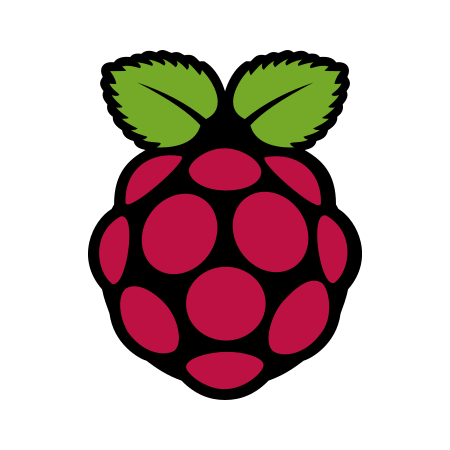deleted by creator
- 11 Posts
- 104 Comments

 2·10 days ago
2·10 days agoNot quite. You need to run a cable from a PoE(power over Ethernet) port on a capable switch to each pie. You just need power to the switch and the switch will power all the pis through their own individual cable. You are only limited to the power supply on the switch you use.
If your main goal is a monero node/mining, start with AMD 3000 series processors, 3700x is a good place to start, and build a used system. If it’s just a node, any SoC will work with enough storage. A few months of a VPS could cost the same as buying your own hardware, that and you own the hardware and data instead of some corporation.
Everything runs in a docker container, so you will probably want to wrap your head around that first thing. Most people start with portainer or dockge for easy docker management and learning with a gui, although learning everything through the command line has its merits as well.
I would get a raspberry pi or an old NUC and just dive right into figuring out how to run the monero node. I believe the monero project maintains docker images. The monero communities are super helpful and nice, and so are the self hosted communities, if you hit a snag or don’t understand something.

 10·12 days ago
10·12 days agoAllows me to run my pis in my rack with only one cable for network and power. It’s how I run all my SoCs, I hate cable management, so I reduce cables as much as possible.

 6·12 days ago
6·12 days agoI know there are third party solutions, just waiting for what they said would be coming soon when they announced the pi 5. That was almost a year ago now, right?

 9·12 days ago
9·12 days agoPower over Ethernet? Anyone else waiting for this?

 21·26 days ago
21·26 days agoIf you use WireGuard for local access, I don’t think you need to open any port on your firewall, unless you are sharing your plex with other people that do not have access via WireGuard. But I know just enough to get me in trouble, so I’m sure I’ll be corrected on this.

 5·1 month ago
5·1 month agoFor Ada cards or newer. Wonder if because it’s open source if it will be adapted to work with older cards?
Reliability of connection to the drives, especially during unscheduled power cycles. USB is known for random drops, or not picking the drive up before all your other services have started, and can cause the need for extra troubleshooting. Can run fine… or it could not. This is in reference to storage drives, not OS drives.
Trunas with Tailscale/headscale/NetBird as far as software and security. As far as hardware, you want storage that is not attached via usb. Either an off the shelf nas solution or a diy nas would work. There are a few YouTubers that touched on this, hardware haven and raidowl I think.

 10·3 months ago
10·3 months agoConsidering it has a pentium, and I have core 2 duos that won’t open some websites, you might run into some issues as well. Can’t fix that, the cpu just doesn’t physically have the instruction set. But other than that, have fun and don’t expect performance greater than a raspberry pi.

 213·3 months ago
213·3 months agoIt’s because of the beans

 2·3 months ago
2·3 months agoThe newer Omada routers are pretty good, and their software is getting better. Personally I use Opnsense on a Chinese fanless router from eBay. Paid for an n100, got an i3-1113 with dual channel memory does everything I need no issue, and it has helped me learn ALOT. However if I had the $200 just laying around today, I would stick with Omada just for simplicity.

 2·3 months ago
2·3 months agoJeff Geerling did a video on them, got me super interested and thinking on how to implement and use with family.

 21·4 months ago
21·4 months agoProxmox is based on kvm/qemu, and is very resource conservative. There is virtually no impact on performance due to the hypervisor, even on older processors. Scheduling on the cpu and hypervisor makes running multiple VMs at the same time trivial as well. RAM and I/O bandwidth are the two things that can affect performance. Running out of RAM due to too many VMs will grind you to a halt, but so would running too many applications or containers on bare metal. Running everything off of one spinning sata disk will make it impossible, but again, same downfall on bare metal.
Those minimal impacts to performance are a minor nuisance compared to the ability to run experiments and learn on sandboxed VMs. Now that TrueNAS has better virtualization support, it has caught my eye as a better homelab solution, but I will always have a proxmox server running somewhere in my stack just due to the versatility it gives me.
 2·4 months ago
2·4 months agoThought they were synonymous. Thank you for making the distinction.
 4·4 months ago
4·4 months agoLine interactive basically means the battery will always be feeding the devices on UPS. Make sure you don’t go over the listed wattage. I learned the hard way and bought an under spec Tripplite, the battery kept dying. I now have a UPS specced out for my router and the Verizon box outside, not anything else on my rack. You should be fine, just saying in the future when you add devices, keep that in mind.

 4·5 months ago
4·5 months agoJust my opinions here:
-
I have essential services running on a separate computer, 8gb pi4 right now. Stuff like NetBoot.xyz, homepage, etc, lightweight and resource low but need to be always up. That way if your main server needs to go down, you still have those services running.
-
I have bought second hand enterprise equipment for most of the hardware I have. Basically anything with ddr4 and pcie 3 or above will crush most things you would like to do. Grabbing an intel with quick sync will help with Jellyfin, but you can add a graphics card for transcoding if you want, a quadro p2000 or higher will be fine. Building is a viable option as well, but you may spend more for less powerful but more efficient hardware.
-
software is probably the most controversial. I went with proxmox on my main server, giving me the ability to run whatever I want whenever I want. It’s not perfect, but gets the job done and has helped me learn A LOT. But flip a coin or roll a dice on what software to run as a newbie, it will all be a learning curve, and everyone will tell you why what they use is superior.
Whatever you do, you’re not wrong. Run things that tickle your fancy and move at your pace. You’ll mess up, step back and punt a lot. Remember to backup essential data before you wipe. Have fun, and good luck on your travels.
-

 7·5 months ago
7·5 months agoWaiting on a merge it looks like

I did this a few years ago with a stack of pi 4s connected to a four port PoE switch. One was an openWRT router, one was a plex server connected to some spinning discs via usb, and I had another you could plug an hdmi cable into and use to view the media. I eventually found out I could host the whole thing on a single pi, but it was still a fun project. Could probably do it all on a pi 5 with an nvme hat no problem. Might look into that when I get the spare tinkering money.